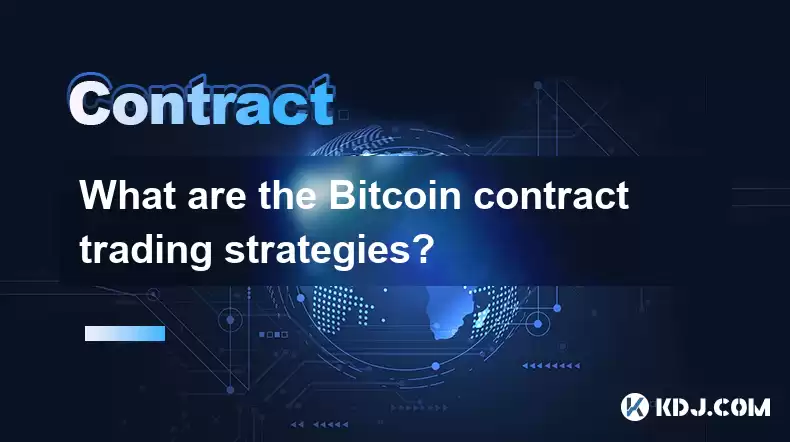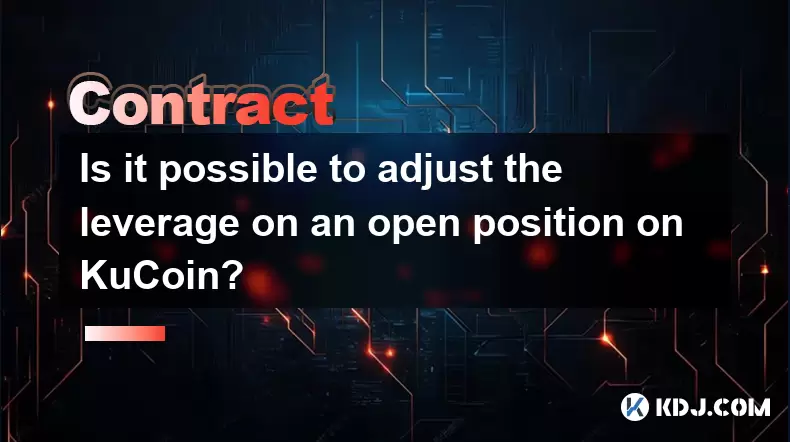-
 Bitcoin
Bitcoin $116700
0.48% -
 Ethereum
Ethereum $4213
6.27% -
 XRP
XRP $3.280
1.22% -
 Tether USDt
Tether USDt $1.000
0.02% -
 BNB
BNB $805.1
2.46% -
 Solana
Solana $180.2
2.65% -
 USDC
USDC $0.0000
0.02% -
 Dogecoin
Dogecoin $0.2412
8.50% -
 TRON
TRON $0.3356
-1.11% -
 Cardano
Cardano $0.8108
3.59% -
 Hyperliquid
Hyperliquid $43.89
8.53% -
 Chainlink
Chainlink $21.15
10.75% -
 Stellar
Stellar $0.4502
1.41% -
 Sui
Sui $3.935
4.69% -
 Bitcoin Cash
Bitcoin Cash $570.7
-1.75% -
 Hedera
Hedera $0.2636
3.28% -
 Avalanche
Avalanche $24.25
4.48% -
 Ethena USDe
Ethena USDe $1.001
0.03% -
 Litecoin
Litecoin $122.0
-0.08% -
 Toncoin
Toncoin $3.445
2.68% -
 UNUS SED LEO
UNUS SED LEO $8.979
-0.08% -
 Shiba Inu
Shiba Inu $0.00001379
6.73% -
 Uniswap
Uniswap $10.91
2.00% -
 Polkadot
Polkadot $4.106
5.39% -
 Dai
Dai $1.000
0.02% -
 Pepe
Pepe $0.00001227
9.07% -
 Bitget Token
Bitget Token $4.507
0.72% -
 Cronos
Cronos $0.1576
3.40% -
 Monero
Monero $272.0
-1.68% -
 Ethena
Ethena $0.7502
21.27%
What are the Bitcoin contract trading strategies?
Mastering Bitcoin contract trading requires understanding leverage, margin, and liquidation, employing technical & fundamental analysis for market prediction, and implementing robust risk management techniques like stop-loss orders to mitigate losses.
Mar 02, 2025 at 07:00 am

What are the Bitcoin Contract Trading Strategies?
Key Points:
- Understanding Bitcoin Contracts: Before diving into strategies, a thorough grasp of Bitcoin contract trading mechanics is crucial. This includes understanding leverage, margin requirements, liquidation, and the different types of contracts available (perpetual, futures). We will explore the nuances of each and how they impact risk and reward.
- Market Trend Analysis: Successful contract trading hinges on accurate market prediction. This section delves into technical analysis (using charts and indicators like moving averages, RSI, MACD) and fundamental analysis (considering news events, regulatory changes, and Bitcoin's overall adoption rate) to identify potential trends. We will explore various methods for identifying support and resistance levels, trendlines, and chart patterns that can signal profitable entry and exit points.
- Risk Management Techniques: High leverage inherent in contract trading magnifies both profits and losses. Effective risk management is paramount to prevent catastrophic losses. This section will cover techniques like position sizing, stop-loss orders, take-profit orders, and diversification to protect capital. We'll also analyze different risk tolerance levels and how they inform trading decisions.
- Specific Trading Strategies: This section explores several established Bitcoin contract trading strategies, including scalping, day trading, swing trading, and arbitrage. Each strategy's unique characteristics, advantages, disadvantages, and suitability for different trader profiles will be examined in detail.
- Leverage and Margin Management: Mastering leverage and margin is crucial for success. This section provides a detailed breakdown of how leverage amplifies returns and risks, explaining the importance of maintaining sufficient margin to avoid liquidation. We will explore different leverage levels and their associated risk profiles, along with strategies for managing margin effectively to maximize profitability while minimizing losses.
Unordered List of Detailed Steps:
- Understanding Bitcoin Contracts:
Bitcoin contract trading involves speculating on the future price of Bitcoin without actually owning the underlying asset. Contracts are agreements to buy or sell Bitcoin at a predetermined price on a future date. Several key aspects must be understood:
* **Leverage:** This allows traders to control a larger position than their account balance would normally permit. A 10x leverage means a $100 investment can control a $1000 position. While leverage amplifies potential profits, it equally amplifies potential losses, potentially leading to liquidation if the market moves against the trader. Understanding how leverage works and its implications is critical.
* **Margin:** This is the amount of funds a trader must deposit to open and maintain a contract position. Margin requirements vary depending on the exchange and the leverage used. Insufficient margin can lead to liquidation, where the exchange automatically closes the position to prevent further losses.
* **Liquidation:** This occurs when the trader's margin falls below the maintenance margin level set by the exchange. The exchange automatically closes the position to cover losses, potentially resulting in significant financial setbacks. Understanding liquidation mechanisms and how to avoid them is crucial for risk management.
* **Perpetual Contracts:** These are contracts with no expiry date, allowing traders to maintain positions indefinitely. They are subject to funding rates, which are periodic payments made between long and short positions to maintain price parity with spot markets. Understanding funding rates is crucial for long-term holding strategies.
* **Futures Contracts:** These contracts have a specific expiry date, requiring traders to either close their position before expiry or take delivery of (or deliver) Bitcoin. Futures contracts are often used for hedging or speculation on price movements over a defined period.
- Market Trend Analysis:
Accurate prediction of Bitcoin's price movement is fundamental to successful contract trading. This requires a blend of technical and fundamental analysis:
* **Technical Analysis:** This involves studying price charts and using technical indicators to identify patterns and predict future price movements. Key tools include moving averages (simple moving average, exponential moving average), relative strength index (RSI), moving average convergence divergence (MACD), Bollinger Bands, and various chart patterns (head and shoulders, double top/bottom). Mastering these tools requires significant practice and experience. Identifying support and resistance levels is also crucial. Support levels represent price points where buying pressure is expected to outweigh selling pressure, preventing further price declines. Resistance levels are the opposite, where selling pressure is expected to outweigh buying pressure, preventing further price increases. Breaking through these levels often signals significant price movements.
* **Fundamental Analysis:** This focuses on broader macroeconomic factors and news events that can impact Bitcoin's price. Examples include regulatory changes, adoption rates by institutions and individuals, technological advancements, and overall market sentiment. Understanding these factors can provide valuable insights into potential price trends.
- Risk Management Techniques:
Effective risk management is paramount to long-term success in Bitcoin contract trading:
* **Position Sizing:** This involves determining the appropriate amount of capital to allocate to each trade. It's crucial to avoid risking too much capital on a single trade, as a losing trade could wipe out a significant portion of the trading account. A common strategy is to risk only a small percentage (e.g., 1-2%) of the trading capital on each trade.
* **Stop-Loss Orders:** These are orders to automatically close a position if the price moves against the trader by a predetermined amount. Stop-loss orders limit potential losses and protect against significant market downturns.
* **Take-Profit Orders:** These are orders to automatically close a position when the price reaches a predetermined profit target. Take-profit orders secure profits and prevent traders from giving back gains due to market reversals.
* **Diversification:** Instead of focusing on a single strategy or asset, diversification across multiple strategies and potentially other cryptocurrencies can reduce overall portfolio risk. This means not putting all your eggs in one basket.
* **Risk Tolerance:** Understanding one's own risk tolerance is crucial. Conservative traders may prefer smaller positions and tighter stop-losses, while more aggressive traders might employ higher leverage and wider stop-losses.
- Specific Trading Strategies:
Several strategies are employed in Bitcoin contract trading:
* **Scalping:** This involves taking many small, short-term trades to profit from small price fluctuations. Scalpers use high frequency trading techniques and rely on precise entry and exit points. This strategy requires significant discipline and speed.
* **Day Trading:** This involves opening and closing positions within the same trading day. Day traders focus on intraday price movements and typically use technical analysis to identify short-term trends.
* **Swing Trading:** This involves holding positions for several days or weeks to capitalize on medium-term price swings. Swing traders use a combination of technical and fundamental analysis to identify potential entry and exit points.
* **Arbitrage:** This involves exploiting price differences between different exchanges. Arbitrage traders simultaneously buy Bitcoin on one exchange and sell it on another, profiting from the price discrepancy.
- Leverage and Margin Management:
Effective leverage and margin management are crucial for avoiding liquidation and maximizing profits:
* **Leverage Levels:** Higher leverage amplifies potential profits but also magnifies losses. Traders should carefully consider their risk tolerance and market conditions before selecting a leverage level. Starting with lower leverage and gradually increasing it as experience grows is generally recommended.
* **Margin Requirements:** Understanding margin requirements is essential to avoid liquidation. Traders should monitor their margin levels closely and adjust their positions accordingly to maintain sufficient margin.
* **Margin Calls:** These are warnings from the exchange that the trader's margin is getting dangerously low. Traders should respond promptly to margin calls by adding more funds or reducing their positions to avoid liquidation.
* **Liquidation Prevention:** Proactive margin management, using stop-loss orders, and diversifying across multiple positions are all crucial strategies for preventing liquidation.
FAQs:
Q: What are the risks associated with Bitcoin contract trading?
A: The primary risks include liquidation due to insufficient margin, significant losses due to high leverage, and market volatility. Other risks involve exchange security breaches, platform malfunctions, and regulatory uncertainty.
Q: How can I learn more about Bitcoin contract trading?
A: There are numerous online resources, including educational websites, trading courses, and YouTube channels, that provide valuable information on Bitcoin contract trading strategies and risk management. However, it’s crucial to thoroughly understand the risks involved before investing real capital.
Q: Is Bitcoin contract trading suitable for beginners?
A: Bitcoin contract trading carries significant risk and is generally not recommended for beginners. It requires a solid understanding of market dynamics, risk management techniques, and trading psychology. Beginners should start with smaller amounts and focus on learning before committing substantial capital.
Q: What are the best platforms for Bitcoin contract trading?
A: Many reputable cryptocurrency exchanges offer Bitcoin contract trading. However, it's crucial to research and choose a platform with a strong track record, robust security measures, and user-friendly interface. It's essential to thoroughly vet any exchange before using it. Remember, past performance is not indicative of future results, and all trading involves risk.
Q: What is the difference between spot trading and contract trading?
A: Spot trading involves buying and selling Bitcoin at the current market price. Contract trading, on the other hand, involves speculating on the future price of Bitcoin without actually owning the underlying asset. Contract trading utilizes leverage, which significantly amplifies both potential profits and losses.
Q: How can I manage my emotions during Bitcoin contract trading?
A: Emotional control is crucial in trading. Developing a disciplined trading plan, sticking to your risk management strategy, and avoiding impulsive decisions based on fear or greed are vital. Keeping a trading journal can also help you track your progress, identify mistakes, and improve your decision-making process. Consider seeking advice from experienced traders or financial advisors.
Disclaimer:info@kdj.com
The information provided is not trading advice. kdj.com does not assume any responsibility for any investments made based on the information provided in this article. Cryptocurrencies are highly volatile and it is highly recommended that you invest with caution after thorough research!
If you believe that the content used on this website infringes your copyright, please contact us immediately (info@kdj.com) and we will delete it promptly.
- Trump, Crypto Vehicle, and WLFI Tokens: A New York Minute on the Latest Buzz
- 2025-08-10 00:30:12
- Wheat Penny Fortune: Unearthing Valuable Coins in Your Pocket Change
- 2025-08-10 00:35:19
- AI Coin Mania: Dubai Millionaires Eye 20x Gains!
- 2025-08-09 23:10:12
- ChatGPT's Hot Takes: Meme Coins to Buy Now for a Wild 2025!
- 2025-08-09 23:10:12
- Jurassic Park Vibes in Your Pocket: The Colourful Canadian Coin Featuring a Dinosaur Eye
- 2025-08-09 23:50:12
- Altcoins on the Radar: VeChain, Ethereum, and the Shifting Crypto Landscape
- 2025-08-09 23:50:12
Related knowledge

Is it possible to adjust the leverage on an open position on KuCoin?
Aug 09,2025 at 08:21pm
Understanding Leverage in KuCoin Futures TradingLeverage in KuCoin Futures allows traders to amplify their exposure to price movements by borrowing fu...

What is the difference between realized and unrealized PNL on KuCoin?
Aug 09,2025 at 01:49am
Understanding Realized and Unrealized PNL on KuCoinWhen trading on KuCoin, especially in futures and perpetual contracts, understanding the distinctio...

How does KuCoin Futures compare against Binance Futures in terms of features?
Aug 09,2025 at 03:22am
Trading Interface and User ExperienceThe trading interface is a critical component when comparing KuCoin Futures and Binance Futures, as it directly i...

How do funding fees on KuCoin Futures affect my overall profit?
Aug 09,2025 at 08:22am
Understanding Funding Fees on KuCoin FuturesFunding fees on KuCoin Futures are periodic payments exchanged between long and short position holders to ...

What is the distinction between mark price and last price on KuCoin?
Aug 08,2025 at 01:58pm
Understanding the Basics of Price in Cryptocurrency TradingIn cryptocurrency exchanges like KuCoin, two key price indicators frequently appear on trad...

What are the specific maker and taker fees on KuCoin Futures?
Aug 08,2025 at 08:28am
Understanding Maker and Taker Fees on KuCoin FuturesWhen trading on KuCoin Futures, users encounter two primary types of fees: maker fees and taker fe...

Is it possible to adjust the leverage on an open position on KuCoin?
Aug 09,2025 at 08:21pm
Understanding Leverage in KuCoin Futures TradingLeverage in KuCoin Futures allows traders to amplify their exposure to price movements by borrowing fu...

What is the difference between realized and unrealized PNL on KuCoin?
Aug 09,2025 at 01:49am
Understanding Realized and Unrealized PNL on KuCoinWhen trading on KuCoin, especially in futures and perpetual contracts, understanding the distinctio...

How does KuCoin Futures compare against Binance Futures in terms of features?
Aug 09,2025 at 03:22am
Trading Interface and User ExperienceThe trading interface is a critical component when comparing KuCoin Futures and Binance Futures, as it directly i...

How do funding fees on KuCoin Futures affect my overall profit?
Aug 09,2025 at 08:22am
Understanding Funding Fees on KuCoin FuturesFunding fees on KuCoin Futures are periodic payments exchanged between long and short position holders to ...

What is the distinction between mark price and last price on KuCoin?
Aug 08,2025 at 01:58pm
Understanding the Basics of Price in Cryptocurrency TradingIn cryptocurrency exchanges like KuCoin, two key price indicators frequently appear on trad...

What are the specific maker and taker fees on KuCoin Futures?
Aug 08,2025 at 08:28am
Understanding Maker and Taker Fees on KuCoin FuturesWhen trading on KuCoin Futures, users encounter two primary types of fees: maker fees and taker fe...
See all articles

























































































